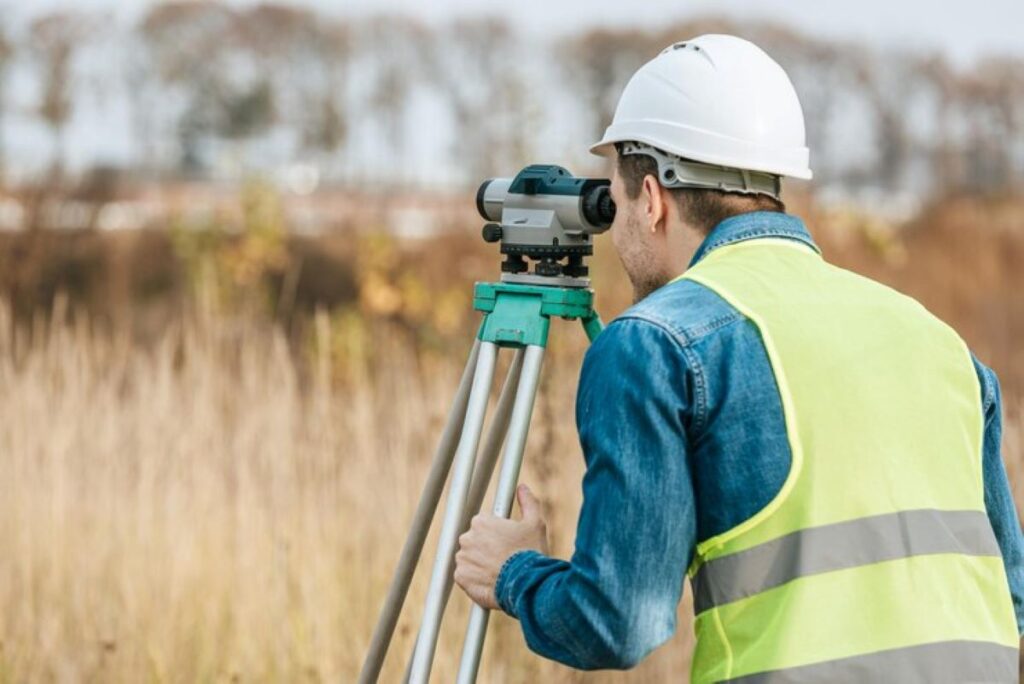The Importance of a Boundary Survey for Landowners

Boundary surveys are a crucial aspect of land ownership and development that can oftentimes be misunderstood or overlooked by landowners. Understanding the significance of these surveys can help property owners safeguard their investments and navigate various legal and financial situations more effectively. This article will delve into the different aspects of boundary surveys, the reasons they are essential, the process of conducting one, commonly held misconceptions, and tips for choosing a reliable surveyor.
Understanding Boundary Surveys
Boundary surveys are professional assessments that determine the precise boundaries of a parcel of land. They are conducted by licensed surveyors who utilize various techniques to measure and mark property lines, ensuring that property owners clearly understand their land’s limits.
Definition of a Boundary Survey
A boundary survey is defined as a detailed examination and measurement of a piece of land to ascertain its legal boundaries, as mandated by governmental regulations. This survey involves gathering historical property records, employing state-of-the-art equipment, and often physically marking the boundary lines on the ground, which can be vital for property disputes and future development.
The accuracy of a boundary survey lies not only in its methodology but also in its adherence to local and national regulations that govern property lines. This is why hiring a qualified surveyor is of utmost importance for landowners who require precise and reliable results. In many cases, boundary surveys can also reveal encroachments or easements that may not have been previously documented, providing landowners with a clearer picture of their property rights and responsibilities.
The Role of a Boundary Surveyor
Boundary surveyors play a significant role in real estate transactions. Their job encompasses a variety of tasks, including researching land records, analyzing data, and physically measuring a property to determine its corners and boundaries.
In addition to delineating property lines, boundary surveyors are responsible for providing valuable insights that can influence property development and usage. They also prepare legal documents and reports that serve as official records in court, should a dispute arise regarding property lines in the future. Furthermore, boundary surveyors often collaborate with architects, engineers, and land planners to ensure that any proposed developments comply with zoning laws and land use regulations. Their expertise is crucial in preventing costly mistakes that could arise from misinterpretations of property boundaries, ultimately safeguarding the interests of property owners and developers alike.
Why Boundary Surveys are Crucial for Landowners
For landowners, boundary surveys serve various critical functions. Beyond merely defining property lines, they offer legal and financial protections that can prevent disputes and misunderstandings with neighbors and local governing bodies.
Legal Implications of Boundary Surveys
One of the main legal implications of boundary surveys is their role in resolving disputes between neighboring property owners. When one party believes that their property extends further than it does, conflicts can arise, leading to costly legal battles. A credible boundary survey provides definitive evidence regarding property lines and can thus be pivotal in dispute resolution.
Moreover, boundary surveys are often required when applying for building permits or zoning changes. Local governments typically require a clear understanding of property lines before approving any development projects, further reinforcing the importance of having an accurate boundary survey.
Additionally, boundary surveys can also play a crucial role in estate planning. When property is passed down through generations, having a clear and precise boundary delineation can prevent future heirs from facing disputes over land ownership. This foresight can save families from the emotional and financial strain that often accompanies property disagreements, ensuring that the land remains a cherished asset rather than a source of contention.
Financial Benefits of Accurate Boundary Surveys
Investing in a boundary survey can yield significant financial benefits for landowners. For instance, a clear understanding of property lines helps prevent costly encroachments, where neighbors inadvertently build on another’s property. Such situations can result in expensive legal fees and remediation costs.
Furthermore, having a clearly defined property can enhance a property’s marketability and value. Future buyers will feel more secure knowing that there are no ambiguities regarding the land they intend to purchase, making it easier for current owners to sell their properties at competitive prices.
In addition to increasing property value, boundary surveys can also facilitate better land use planning. By understanding the exact dimensions and layout of their property, landowners can make informed decisions about landscaping, fencing, and other improvements. This strategic planning can maximize the utility of the land, potentially leading to increased enjoyment and even additional revenue streams, such as leasing portions of the property for agricultural use or recreational activities.

The Process of Conducting a Boundary Survey
The process of conducting a boundary survey consists of several key stages, each aimed at ensuring accuracy and reliability in the final results. Understanding this process can be beneficial for property owners considering a survey of their land.
Initial Research and Planning
The first stage of a boundary survey involves comprehensive research and planning. This includes reviewing historical records, deeds, and existing surveys of the property, as well as gathering information about adjoining parcels. Surveyors may also consult county recorders or local governments to obtain necessary property data.
This initial research helps surveyors understand any historical issues that may complicate the boundaries, such as previous disputes or changes in land use. A well-thought-out plan is essential for an efficient survey process that minimizes time and costs for the landowner. Additionally, surveyors often engage with property owners to discuss their specific needs and any concerns they may have regarding the boundaries. This dialogue can uncover unique circumstances that might not be evident in the records, such as informal agreements with neighbors or planned future developments that could impact property lines.
Fieldwork and Data Collection
The next phase is the fieldwork and data collection stage, where surveyors physically visit the property to conduct their measurements. This stage involves utilizing advanced tools such as GPS and total stations to accurately measure distances, angles, and elevations.
Surveyors will also identify and mark any existing boundary markers, such as fences or stakes, which can assist in clarifying the actual property lines. This fieldwork is critical as it provides the data necessary for crafting an accurate boundary report. In addition to traditional methods, some surveyors may employ aerial imagery or drone technology to capture a comprehensive view of the property, allowing for a more thorough analysis of the land’s topography and any potential obstacles that could affect boundary determination. This modern approach not only enhances accuracy but also provides a visual representation that can be invaluable for discussions with property owners and stakeholders.
Analysis and Final Report
After collecting the necessary data, surveyors enter the analysis phase, where they interpret the information based on the standards outlined by local and national surveying guidelines. They will analyze the gathered data to ensure all measurements align with property records, addressing any discrepancies.
Once the analysis is complete, surveyors compile their findings into a final report, which will include detailed sketches, legal descriptions, and any applicable maps. This report serves as an official document that fortifies landowners’ legal rights and is essential for any future transactions involving the property. Furthermore, the final report often includes recommendations for resolving any boundary disputes that may have been identified during the survey process. This proactive approach can save property owners time and money by addressing potential issues before they escalate into legal conflicts, ensuring that everyone involved has a clear understanding of the established boundaries moving forward.
Common Misconceptions about Boundary Surveys
Despite the crucial role that boundary surveys play for landowners, misconceptions sometimes hinder property owners from understanding their necessity. Clearing up these misunderstandings can empower landowners to make informed decisions.
Boundary Surveys vs. Land Surveys
One common misconception is that boundary surveys and land surveys are interchangeable. While both are important in the field of surveying, they serve different purposes. Boundary surveys focus specifically on determining the legal boundaries of a property, whereas land surveys may encompass broader aspects such as topography, features, and land use considerations.
Understanding this difference is vital for landowners who need a specific type of survey based on their needs. Clarifying goals with a surveyor before starting the survey process can ensure that the right type is performed for the intended purpose.
The Assumption of Visible Boundaries
Another widespread belief is that visible markers or fences inherently indicate where property lines are drawn. In many cases, these visible boundaries may not reflect the actual legal boundaries defined in property records. Fences can be erected in the wrong locations due to misunderstandings or assumptions made by previous owners.
Relying on visible boundaries alone can lead to conflicts and potentially costly disputes. Engaging a qualified surveyor to conduct a boundary survey can provide clarity and protect landowners from unforeseen issues.

How to Choose a Reliable Boundary Surveyor
Choosing a reliable boundary surveyor is essential for ensuring the accuracy and legality of the survey process. With numerous options available, landowners should be diligent in their selection.
Qualifications to Look For
When searching for a boundary surveyor, it is important to consider their qualifications, including licensing and experience. A certified surveyor will typically have passed exams and fulfilled specific educational requirements, proving their competence in the field.
Additionally, potential surveyors should have experience relevant to the particular requirements of the property being surveyed. Checking references and past client feedback can also give insight into a surveyor’s work ethic and reliability.
Questions to Ask a Potential Surveyor
Before hiring a surveyor, landowners should prepare a list of questions to ask potential candidates. These might include inquiries about the surveying methods they use, their familiarity with local laws, and their turnaround times for completing the survey.
Engaging in conversation about their previous projects and how they approach boundary disputes can provide valuable context for choosing the right professional. By asking the right questions, landowners can find a surveyor who meets their specific needs and expectations.
In conclusion, understanding the importance of a boundary survey is essential for landowners. It is not just a legal formality but a protective measure that can prevent disputes, enhance property value, and streamline future development. By selecting a qualified surveyor and being informed about the surveying process, property owners can ensure their interests are well-protected.
More to Read : When Do You Need a Contour Survey for Your Property?
